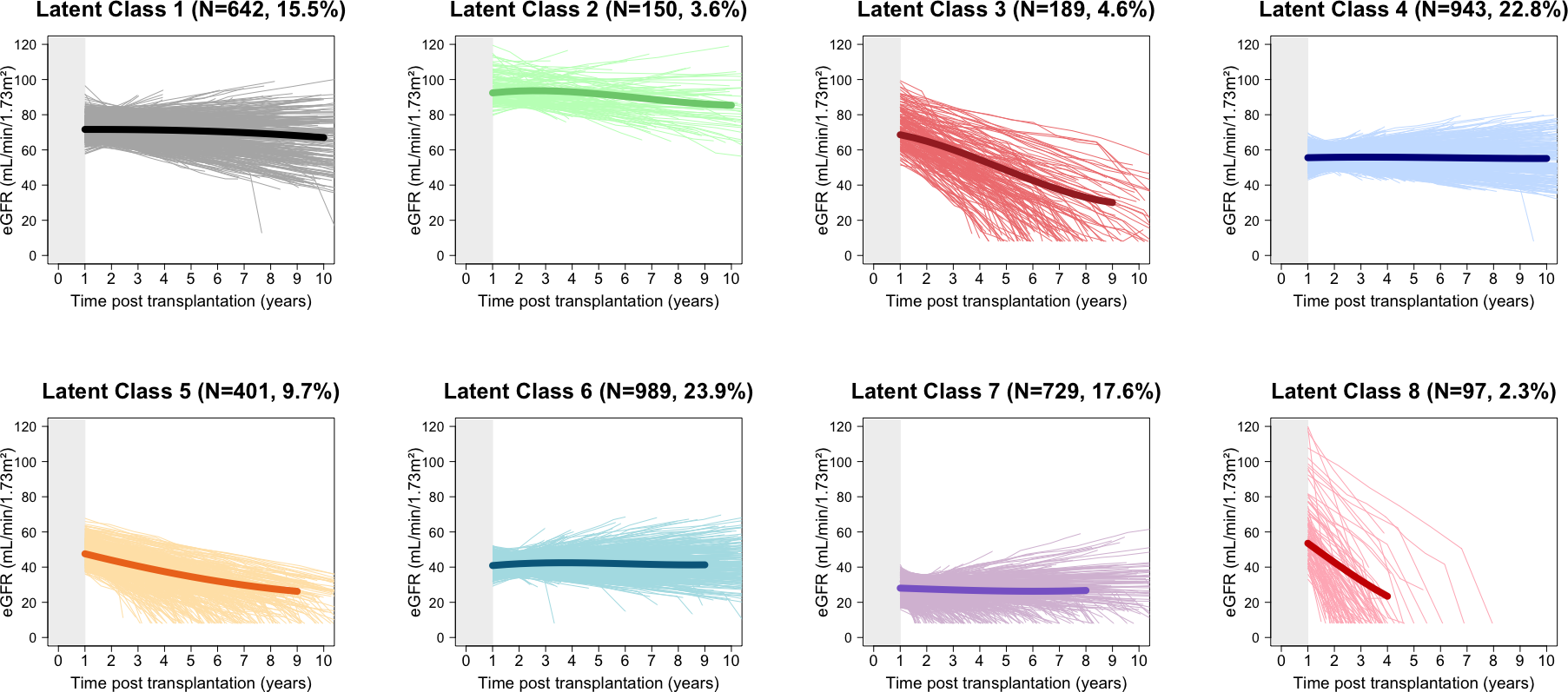Population-Based Modeling of Prototypes and Determinants of Allograft Function Trajectories after Kidney Transplantation: Impact for Patient Monitoring and Risk Stratification
1Paris, ., France, 2Leuven, ., Belgium, 3Zagreb, ., Croatia, 4Toulouse, ., France, 5Los Angeles, ., CA, 6Baltimore, ., MD, 7Rochester, ., MN, 8Lyon, ., France, 9Nantes, ., France, 10Tours, ., France, 11New York, ., NY, 12Richmond, ., VA, 13Nancy, ., France, 14Philadelphia, ., PA
Meeting: 2019 American Transplant Congress
Abstract number: 6
Keywords: Glomerular filtration rate (GFR), Graft survival, Renal function, Risk factors
Session Information
Session Name: Concurrent Session: Kidney Complications: Late Graft Failure I
Session Type: Concurrent Session
Date: Sunday, June 2, 2019
Session Time: 2:30pm-4:00pm
 Presentation Time: 2:42pm-2:54pm
Presentation Time: 2:42pm-2:54pm
Location: Veterans Auditorium
*Purpose: Although the current gold standard of kidney allograft patients monitoring relies on GFR assessment, little is known about long-term GFR trajectories prototypes and their determinants at a population level. Such information would be key for improving prediction and risk stratification in kidney transplantation.
*Methods: International population-based cohort involving 16 kidney transplant referral centers (11 in Europe and 5 in the US) including patients from 2000 to 2016. Patients underwent assessment of clinical, histological, immunological parameters including repeated GFR measurements (MDRD estimation) after transplantation. Latent class mixed models were performed to determine the profiles eGFR individual trajectories. Multinomial regression analysis was used to assess transplant parameters associated with the eGFR trajectory profiles.
*Results: 10,936 patients were included (n=4,140 patients in the French development cohort and n=6,796 patients in the validation cohorts). The median time of follow up post transplant was 6 years (IQR 3.7 – 8.7). A total of 115,867 eGFR measures were analyzed (MDRD estimation). Overall, we identified 8 latent classes corresponding to distinct patients eGFR trajectories after transplantation (Fig 1). The determinants of the latent classes were the donor age and assessed at 1-year: allograft inflammation (i&t), microvascular inflammation (g&ptc), tubulo-interstitial fibrosis (ci&ct), MFI of anti-HLA DSA, the proteinuria and the first value of eGFR. We confirmed that the same 8 profiles of eGFR trajectories and their determinants were conserved in European and US cohorts.
*Conclusions: In this international cohort of kidney transplant recipients, we identified for the first-time the long-term eGFR trajectories profiles and their main determinants. Our results provide the basis for eGFR trajectory-based assessment for improving risk stratification at early stage post-transplant. Our results also provide a mode for eGFR trajectory-based approach for clinical trials empowerment.
To cite this abstract in AMA style:
Raynaud M, Aubert O, Naesens M, Juric I, Basic N, Kamar N, Huang E, Jordan S, Orandi B, Segev D, Stegall M, Morelon E, Giral M, Bailly E, Akalin E, Gupta G, Ladrière M, Buchler M, Reese P, Lefaucheur C, Loupy A. Population-Based Modeling of Prototypes and Determinants of Allograft Function Trajectories after Kidney Transplantation: Impact for Patient Monitoring and Risk Stratification [abstract]. Am J Transplant. 2019; 19 (suppl 3). https://atcmeetingabstracts.com/abstract/population-based-modeling-of-prototypes-and-determinants-of-allograft-function-trajectories-after-kidney-transplantation-impact-for-patient-monitoring-and-risk-stratification/. Accessed December 19, 2025.« Back to 2019 American Transplant Congress

